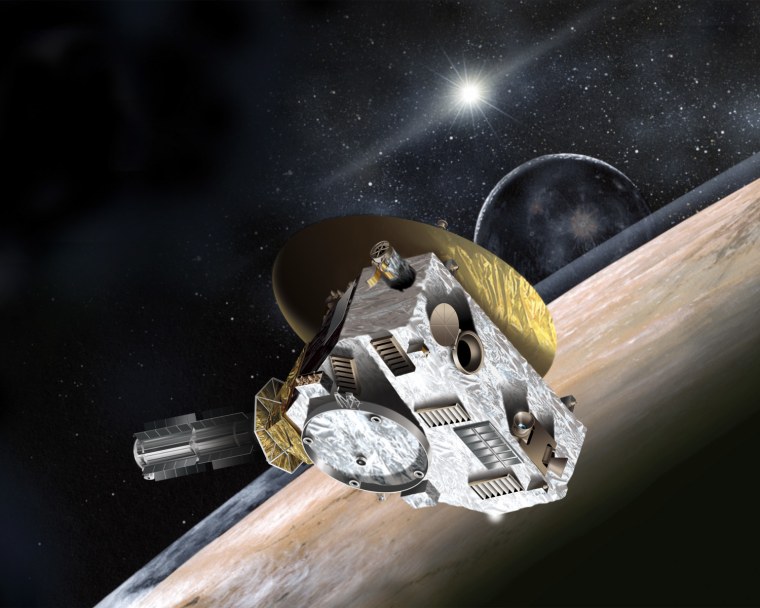A NASA probe speeding toward Pluto hit a major checkpoint on Friday when it crossed the orbit of Uranus.
NASA's New Horizons spacecraft encountered Uranus' orbit at 6 p.m. ET Friday while flying 1.8 billion miles (2.9 billion kilometers) from Earth.
"New Horizons is all about delayed gratification, and our 9½-year cruise to the Pluto system illustrates that," said principal investigator Alan Stern of the Southwest Research Institute in Boulder, Colo. "Crossing the orbit of Uranus is another milepost along our long journey to the very frontier of exploration."
The spacecraft is expected to reach Pluto and its three moons (Charon, Nix and Hydra) in July 2015, after which it might also encounter smaller bodies in the distant Kuiper Belt, the ring of icy bodies beyond Neptune's orbit. [The Solar System Explained From the Inside Out]
NASA billed New Horizons as its fastest spacecraft ever launched when it sprinted away from Earth at about 36,000 mph (nearly 58,000 kilometers per hour) in January 2006. It has covered some serious space since then — traversing 20 times the distance between Earth and the sun, including a 2007 flight through the Jupiter system for a gravity-assisted speed boost. The Jupiter encounter gave New Horizons the chance to snap new photos of the giant planet and its moons.
"This mission is a marathon," said project manager Glen Fountain of Johns Hopkins University's Applied Physics Laboratory. "The New Horizons team has been focused on keeping the spacecraft on course and preparing for Pluto. So far, so good, and we are working to keep it that way."
Since the New Horizons probe is currently in an electronic sleep mode, and since Uranus was 2.4 billion miles (nearly 3.9 billion kilometers) from the spacecraft when the probe crossed the planet's orbit, the science team wasn't planning to take any pictures of the gas giant during the orbital pass-through.
The mission team on the ground is busy making final preparations for the probe's 2015 rendezvous with Pluto. in April, scientists will begin searching for potential flyby targets in the Kuiper Belt. Preparations are also under way for the spacecraft's annual systems checkout in the spring.
In the meantime, New Horizons continues its blistering pace toward Pluto. The next planetary milestone for the intrepid explorer will be to cross the orbit of Neptune, which will occur on Aug. 25, 2014 — exactly 25 years after the Voyager 2 spacecraft made its historic exploration of that giant planet.
Follow Space.com for the latest in space science and exploration news on Twitter and on .
